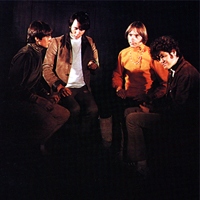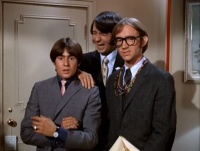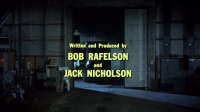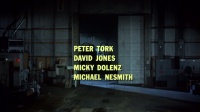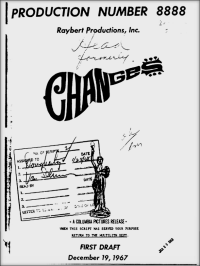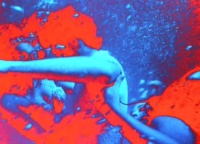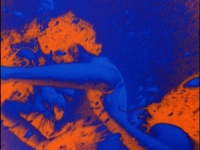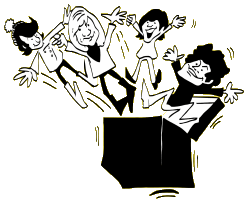|
EDIT NEWS: The Monkees - Head - 'Changes' - Page 1
| |||||||||||||||||||||||||||||||||||||||||||||||||||||||||||||||||||||||||||||||||||||||||||||||||||||||||||||||||||||||||||||||||||||||||||||||||||||||||||||||||||||||||||||||||||||||||||||||||||||||||||||||||||||||||||||||||||||||||||||||||||||||||||||||||||||||||||||||||||||||||||||||||||||||||||||||||||||||||||||
| Updated March 2013 | |||||||||||||||||||||||||||||||||||||||||||||||||||||||||||||||||||||||||||||||||||||||||||||||||||||||||||||||||||||||||||||||||||||||||||||||||||||||||||||||||||||||||||||||||||||||||||||||||||||||||||||||||||||||||||||||||||||||||||||||||||||||||||||||||||||||||||||||||||||||||||||||||||||||||||||||||||||||||||||
| |||||||||||||||||||||||||||||||||||||||||||||||||||||||||||||||||||||||||||||||||||||||||||||||||||||||||||||||||||||||||||||||||||||||||||||||||||||||||||||||||||||||||||||||||||||||||||||||||||||||||||||||||||||||||||||||||||||||||||||||||||||||||||||||||||||||||||||||||||||||||||||||||||||||||||||||||||||||||||||
The film didn't do very well. It bombed and was buried. The Monkees severed ties with Raybert, then slowly imploded. Raybert went on to make Easy Rider. Jack Nicholson became quite famous. That's the short version. The longer version is fraught with problems, biographically. As a 'cult underground film', Head has accrued its fair share of apocryphal tales over the past four decades, and some of these refuse to die. Did Jack Nicholson really write the entire film while on an acid trip? Was there really no publicity aside from a single, silent, TV ad featuring a close-up of some bloke's face while he received a blowjob and no mention of the Monkees? Did the film really only play for a few weeks in the US, with no overseas distribution? The short answer to all of the above is a curt 'no' - which isn't to say that the actual story behind the film isn't just as odd in places. It's a story of four young teen-stars chewing on the hand that fed them, of a visionary director struggling to escape from TV, of industrial walk-outs, internal power-struggles, recrimination and several egos colliding at once. There have been curiously few official attempts to document the story. To date, probably the most detailed overview is still Glenn A Baker's biog Monkeemania (Plexus, 1986), which devoted a decent-enough chapter to the making of the movie at a time when information was pretty scarce (indeed, for many years pretty much all info on the net could be traced back to this source - including its various inaccuracies). Fresh info or interviews since that book's publication have been few and far between (although Criterion's recent release of the film on Blu-ray has added an interview with Bob Rafelson and a Monkees commentary track). Andrew Sandoval's exhaustive and fascinating Monkees day-by-day chronology (Backbeat, 2005) fills in a lot of detail about the minutiae of the music end of things, and digs up some great period interviews and press clippings, but the format of the book inevitably restricts how much biographical stuff can be imparted. Without solid information it's perhaps unsurprising that most online commentaries or essays about Head go down the road of attempting to delve instead into all the hidden meanings, metaphors and supposed philosophies at play in the film. Always interesting to read, but with such an eclectic work it inevitably becomes a little too easy to project all kinds of interpretations which have little or nothing to do with the filmmakers' original intentions. In terms of the film's 'pre-production', here are some basic details. Although it wasn't announced publicly until later, by the middle of 1967 the TV show's days were pretty much numbered. Despite a double-Emmy win in June of that year, NBC would cancel the TV show after its second season. Depending on which version of the story you choose to believe, this was either mutually agreed by all parties (the group themselves having become increasingly jaded by the predictable nature of the sitcom format) or a grave set-back in their fortunes which the Monkees camp were desperate to play down in the music press. The truth probably lies somewhere between the two.
There was still however the matter of the big-screen spin-off, Columbia Pictures having agreed on a modest yet adequate budget. The film project had in fact been alluded to several times in press interviews throughout 1967 (at one stage, Bob Rafelson even claiming to have 'tossed away' several potential screenplays) but it wasn't until Rafelson's mate Jack Nicholson, then still just a bit-part actor and scriptwriter, joined the entourage of that year's Summer tour that concrete ideas began to fall into place. In late, November 1967, with just a few more weeks of filming for the second TV series to go, the group, Rafelson, Nicholson and few others, booked an extended weekend break at a golfing resort in Ojai, California to discuss the film. Not a 'scriptwriting' session at this stage, more a general pitching in and thrashing out of ideas from all those involved. This technique in itself wasn't particularly revolutionary within the Monkees camp: back in 1966, in preparation for the TV show, director Jim Frawley had conducted similar brainstorming sessions with the group in an attempt to find the overall voice of the series, determine its style of humour and isolate how best to exaggerate and capitalise on the individual characteristics of the players. It would appear that the Ojai sessions approached this idea in reverse. The film would set out to, as Peter Tork later described it, 'grab a little reality', expose the trappings of the studio process (often, literally) and show the four groupmembers as people rather than the 'manufactured image' the studio had so carefully cultivated for public consumption a year and a half previously. Looked at within the evolution of The Monkees, this makes perfect sense. Conceived initially by Bob Rafelson and Bert Schneider as a fake TV pop group to be sold to a teenage girl market, with studio musicians providing the backing tracks for songs they hadn't written, they soon rebelled, sacked their musical director, toured as a real band and took charge of their recording sessions (yielding a fantastic third LP, Headquarters in 1967). They'd grabbed reality firmly enough in terms of the music so why not attempt something similar with their video presentation. It's often been suggested that the film was intended from the outset as the Monkees' 'suicide note', although all documented biographies suggest that this was far from the case - that the group regarded it more akin to an 'apotheosis'. Mike Nesmith in particular couldn't restrain his excitement, announcing to the press in the weeks prior to its release that Head would 'astound the world!' Rafelson and Schneider's take on events was perhaps a little more pension-plan oriented. They would have been well aware - certainly moreso than the group themselves at that point - that the Monkees had a limited shelf-life and were keen for Raybert Productions to move into more 'adult' areas of film-making. Since Rafelson had already elected to use his first big screen venture as a love/hate letter to American cinema and to fill it with pastiches or tributes to the myriad cinematic styles of the previous thirty or forty years of Hollywood, a pretty open 'anything goes' canvas was prepared for whatever the participants might suggest. All the discussion sessions at Ojai were tape-recorded, the plan being for Rafelson and Nicholson to use these as a starting point for when they wrote the actual script. Some members of the group however also fancied a shot at taking control of the direction and to express their talents behind the camera. When the inevitable squabbling was done with, a compromise was reached: Raybert gave Peter Tork and Micky Dolenz an episode each of the TV show to direct. Dolenz's effort - 'The Frodis Caper' (Season 2, Show 26, NBC, March 25 1968), which he also co-wrote - was the first Monkees TV production after the Ojai meet-up and still stands out as one of the more weird and inventive episodes, its appearance on his showreel inevitably providing a nice boost years later when he moved to the UK and embarked on a second career, directing kids TV shows like Metal Micky and Luna.
In fact, their credit sheet at the end of the film simply lists their names, without attributing to them any particular function (eg 'With'; 'Starring; 'Featuring', etc) beforehand. As such it could be suggested that since their credit sheet follows one which reads 'Written and Produced by JACK NICHOLSON, BOB RAFELSON' then they're effectively sharing their credit. If it was an attempt at a compromise however, it was a rather shifty one. All whinging aside, by December 19 1967, the first draft of the Monkees film, entitled 'Changes', had been written, assigned a production number, printed off and dispatched to all participants. A copy of that shooting script would surely prove fascinating reading, and presumably yield some extra clues to the intentions of the film. Oh, we have one here, do we? Jolly good.
The 'added' or 'revised' pages are denoted in the script both by a typewritten note in the header (with the date of the revision helpfully included) and the addition of a letter after the extra page (eg Page 25A, Page 25B, etc). Extra shots inserted into these pages are also denoted alphabetically. No doubt the original revisions were also printed on different coloured sheets of paper, but we only have photocopies to work from. In an ideal world we could assume that those pages without such header-notes are pretty much unchanged since the original December 1967 first draft. Unfortunately a few pages not marked 'revised' or 'added' also include extra shot numbers (or notes on omitted shots) so some rewrites were evidently undertaken before they began denoting such. Still, it's the only starting point we have so we'll run with it for now. All sections which differ drastically from the Head we know and love have been highlighted in red. Please note however that The Monkees themselves rarely performed their scripts word-for-word and itemising each and every last deviation from the dialogue in the final edit would soon prove unreadable. So in most instances, where the general meaning or thrust of a line is comparable to what was eventually delivered in the film, we've left it unhighlighted. By way of contrast, lines written for other members of the cast tended to be performed much as they appear on the page. As we go through the shooting script we'll also be referencing a curious Head trailer, namechecked on the Rhino DVD as 'NY Action'. Resembling the quick-cut acid flashback sequence towards the close of Roger Corman's The Trip (scripted of course by Jack Nicholson), the 2'20" ad aims towards selling Head to its initial New York underground audience (as opposed to the later theatrical ads and more 'conservative' poster campaign which backed its general release) and features a staggering fragmented montage of captured moments from the movie, backed with a soundtrack not too dissimilar to the aural collage of clips prepared for the initial radio spots. No shot in the trail is longer than three seconds (in fact many clips appear to have been longer originally, then snipped into several sections and redistributed throughout).
The only sequence which matches the film exactly is the shot of the Monkees being sucked off Victor Mature's scalp and disappearing into the nozzle of the vacuum cleaner - and this celluloid appears to have been culled from an alternate, rather manky and discoloured, source anyway - perhaps a test-reel for the matte-shot? Sadly, aside from the script and some production photos (about 800 of which were snapped throughout the production by Henry Diltz but only a fraction of which have ever been officially published), it's our only real glimpse into 'deleted scenes' from Head (at the time of writing, no rushes, out-takes or rough work-edits have surfaced - although, contrary to earlier reports, every shot filmed for the movie still exists in the Sony archive.
If anyone reading has any further info - eg, earlier drafts, period articles or general corrections, please do send them over to [email protected]. So, let's continue to celebrate one of the most extraordinary films ever made with a nice serious dissection. Grab a coffee or something. This will take a while...
| |||||||||||||||||||||||||||||||||||||||||||||||||||||||||||||||||||||||||||||||||||||||||||||||||||||||||||||||||||||||||||||||||||||||||||||||||||||||||||||||||||||||||||||||||||||||||||||||||||||||||||||||||||||||||||||||||||||||||||||||||||||||||||||||||||||||||||||||||||||||||||||||||||||||||||||||||||||||||||||
|
| |||||||||||||||||||||||||||||||||||||||||||||||||||||||||||||||||||||||||||||||||||||||||||||||||||||||||||||||||||||||||||||||||||||||||||||||||||||||||||||||||||||||||||||||||||||||||||||||||||||||||||||||||||||||||||||||||||||||||||||||||||||||||||||||||||||||||||||||||||||||||||||||||||||||||||||||||||||||||||||
